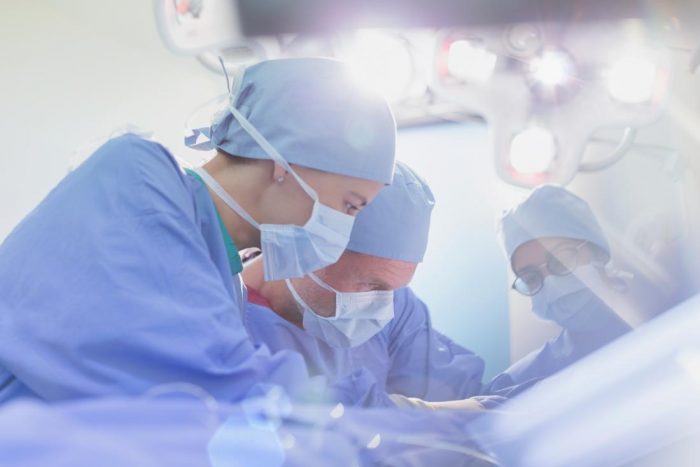Exercising more after being diagnosed with breast cancer could lower your risk of dying, a study suggests.
Women who bumped up their activity to 150 minutes per week, the recommended amount, halved their risk of death.
Those who continued to meet the guidelines for moderate exercise, which includes cycling or brisk walks, had a 30 per cent lower risk.
Doctors are now urging patients keep active post-diagnosis, in order to give them the best chance of surviving the killer disease.
Scientists at the German Cancer Research Centre in Heidelberg tracked more than 2,000 older women for a decade.
The study is understood to be one of the first to investigate if exercise is beneficial for breast cancer patients.
It is well known that the fitter women are, the less likely they are to die if they get cancer. But less research has been done on the effects of getting physically fitter after being diagnosed with breast cancer.
The new findings, published in the journal Breast Cancer Research, bolster the evidence.
Participants were aged 50 to 74. By the end of the study, there were 206 deaths, of which 114 were caused by breast cancer.
Results suggested women who increased their activity level after a diagnosis – rather than keeping it the same – cut their risk of death the most.
And women who didn’t exercise before or after their diagnosis did not see their risk of death reduced, the team revealed.
Compared to them, women who started exercising after their diagnosis reduced their risk of dying from breast cancer by 46 per cent.
Women who were active pre- and post-diagnosis cut their odds of dying from breast cancer by 39 per cent.
The study did not look at the effects of exercise on men – but the researchers said it is unlikely the benefits only apply to women.
Dr. Audrey Jung, the corresponding author said: “The results of our study suggest that there are merits to leisure-time physical activity in breast cancer patients.”
The results are only reflective of the patients in the study who ha already survived around six years after their diagnosis, the authors said.
They conclude women should be encouraged to exercise following a breast cancer diagnosis, especially if they are not sufficiently active already.
Their findings add momentum to a movement towards ‘prescribing’ cancer patients with exercise as part of the care.
Should cancer patients do exercise? Early evidence suggests an exercise programme before treatment helps patients tolerate difficult treatments and experience fewer complications.
There is stronger evidence demonstrating that exercising while undergoing cancer treatment limits the dreaded side effects such as fatigue.
Studies indicates that after completion of treatment, undertaking an exercise programme leads to increased cardiorespiratory and muscular fitness, reduced fatigue, and improved body composition and wellbeing outcomes.
For patients under palliative care, preliminary evidence suggests that exercise is feasible, and may help maintain physical function, control fatigue, and improve bone health.
Regular physical activity after a cancer diagnosis has been linked with longer survival and lower risk of recurrence or disease progression.
Despite the majority of evidence being classed as preliminary due to factors such as small-sized studies, there is consensus among scientists that exercising before, during, and after cancer treatment is generally feasible, safe, and beneficial for most patients.
In October, an international panel of cancer experts set out a number of recommendations for the use of exercise after reviewing the scientific evidence.
Leaders of organisations such as the American Cancer Society and Macmillan Cancer Support said exercise plans for cancer patients could boost survival odds after a breast, colon or prostate cancer diagnosis.
Julia Frater, Cancer Research UK’s senior specialist cancer information nurse, said: “Exercise is safe for most cancer patients to take part in. It can improve general health, mood and feelings of well being and there is emerging evidence that in some cases it might help improve overall survival.
“But more research needs to be done on the types of exercises that are most helpful and the circumstances when it might make a difference to survival. Any patients considering taking up vigorous exercise should speak to their doctor first just in case there is a reason why they should avoid some forms of exercise.”
Professor Anna Campbell, of Edinburgh Napier University, has been working in the area of exercise and cancer survivorship for 20 years.
She said there are a number of potential mechanisms that make exercise beneficial, including boosting the immune system.
She told MailOnline: “Exercise may be directly impacting on the tumour. We think it may allow immune cells to infect the tumour’s environment, altering the development of bad cells.
“Or, exercise switches off some of the tumour’s genes. We haven’t go definitive evidence yet. It is time to ensure that staying active post-cancer diagnosis is a standard part of a cancer care package.”
Meanwhile, exercising regularly could decrease inflammation and help protect against heart disease, a new study suggests.
In research conducted on mice, scientists from Massachusetts General Hospital, United States (U.S.), looked at one group of rodents that ran on treadmills daily and one group that did not.
The mice that got exercise every night had lower levels of a type of immune system cell that can turn into white blood cells.
This lowered their risk of chronic inflammation, which contributes to the formation of plaques that block the arteries and can cause cardiovascular disease.
According to the National Institutes of Health, the risk for coronary heart disease begins increasing for men at age 45 and for women at age 55.
To improve overall heart health, the American Heart Association recommends exercising each week at a moderate intensity for at least 150 minutes a week or at a high intensity for at least 75 minutes a week.
For the study, published in the journal Nature Medicine, the team studied mice that were split into two groups.
One group was put into cages with treadmills, where some of the rodents ran as many as six miles per night.
The second group was put into cages without treadmills. After six weeks, the two groups were compared.
Researchers found that the mice that ran on treadmills had reduced levels of cells found in the bone marrow known as hematopoietic stem and progenitor cells (HSPCs).
HSPCs have the ability to turn into any type of blood cell, including white blood cells called leukocytes, which increase inflammation.
Inflammation helps plaques grow, which can clog arteries and trigger blood clots, and lead to heart disease, heart attacks and strokes.
“We were surprised by how much mice loved to run,” lead author Dr. Matthias Nahrendorf of the Center for Systems Biology at Massachusetts General Hospital told DailyMail.com.
“But we were also surprised that the effects of running stayed with the mice for a while, for as long as two to three weeks after [the end of the study period].”
Additionally, researchers found the mice that exercised produced less leptin, which is a hormone responsible for controlling appetite.
Previous studies conducted by the team showed high levels of leptin and leukocytes in humans that had cardiovascular disease linked to inflammation.
Dr. Nahrendorf said the results shows the importance of exercise, but also how this could lead to new therapies for preventing heart attacks and strokes
“In the future, we want to look for pathways that, like exercise, reduce the overproduction of white blood cells, because that reduces inflammation,” he said.
“I’m not saying we would have a pill but if we could look for a way to reduce inflammation – hit the pathways with a drug – that would be the Holy Grail in anti-inflammatory therapy.”
Meanwhile, it is never too late to start exercising, according to a major study, which found active over-60s cut their risk of heart attack and stroke.
People who went from being sedentary to working out three or four times a week reduced their risk of heart problems by up to 11 per cent compared to those who did not exercise.
And the level of activity needed to cause a change was equal to just one hour of running per week – less than the 75 to 150 minutes recommended by the British National Health Service (NHS).
The study of more than a million people found those who used to work out five times a week but stopped saw their risk rise by 27 per cent.
The researchers in South Korea said their findings were evident even in people with disabilities and chronic conditions such as high blood pressure or type 2 diabetes.
They have urged doctors to prescribe physical activity for older patients in a bid to prevent major health problems.
Kyuwoong Kim, a PhD student at Seoul National University said: “The most important message from this research is that older adults should increase or maintain their exercise frequency to prevent cardiovascular disease.
“While older adults find it difficult to engage in regular physical activity as they age, our research suggests that it is necessary.
“We believe that community-based programmes to encourage physical activity among older adults should be promoted by governments.
“Also, from a clinical perspective, physicians should “prescribe” physical activity along with other recommended medical treatments for people with a high risk of cardiovascular disease.”
The study is published in the European Heart Journal.
Physical activity is well established as a means of preventing heart disease, but it’s not clear if the benefits remain when exercise level changes.
The study looked at 1,119,925 men and women aged 60 years or older.
They underwent two health checks by the Korean National Health Insurance Service in 2009-2010 and again in 2011-2012.
At each check, the participants’ levels of moderate and vigorous exercise per week were calculated.
One workout was considered to be half an hour or more of moderate exercise, such as brisk walking or cycling, or more than 20 minutes of vigorous exercise such as running or swimming.
Researchers assessed how activity levels changed between the two checks.
They then collected data on heart disease and strokes from January 2013 to December 2016, identifying 114,856 cases.
The researchers found that 22 per cent of those inactive at the first check had increased their physical activity by the time of the second.
Exercising three to four times a week had reduced their risk of heart problems by 11 per cent, and once or twice a week reduced the risk by five per cent.
Just over half (54 per cent) of people who had been exercising five or more times a week at the time of the first screening had become completely inactive by the time of the second.
These people were found to have a 27 per cent increased risk of heart problems, but less so if they still exercised occasionally.
When looking at people with disabilities and chronic conditions, a switch from being inactive to being active three to four times a week also reduced their risk of cardiovascular problems.
People with a disability could reduce their risk by 16 per cent, and those with diabetes, raised blood pressure or cholesterol levels had their risk reduced by up to seven per cent.
About two thirds of those who took part in the study said they were physically inactive at both checks.
Professor Naveed Sattar, of the Institute of Cardiovascular and Medical Sciences, University of Glasgow, said those who stopped exercising might have been ill.
How does exercise protect the heart? Exercise burns calories, which can maintain a healthy weight. Obesity is one of the biggest causes of heart problems.
It lowers blood pressure, cholesterol, and helps regulate blood sugar levels, all of which have been linked to cardiovascular disease.
A single bout of exercise may protect your heart immediately through a process known as ischemic preconditioning. A little bit of ischemia — defined, as an inadequate blood supply to part of the body, especially the heart — may be a good thing.
It allows the heart to adapt and protect itself from longer episodes of ischemia, which normally occurs from a blockage in arteries.
He told MailOnline: “It is likely some people who were active all their lives but then cut activity do so because of illness, and it is the illness that increases risks for other diseases.
“The bottom line, however, is that encouraging and so facilitating activity at any age is beneficial. Asides from the health benefits, more active people tend to be happier, and less isolated so multiple benefits.
“This paper adds more evidence to suggests activity started at any age helps lower risks of important heart and stroke outcomes.”
The NHS says over-65s should do a mix of moderate and vigorous areobic activity totaling 150 minutes per week, plus two strength-training workouts.
The authors said they couldn’t be certain if the findings will apply outside of the Korean population due to differences in ethnicity and lifestyle.
They also said a limitation was that the physical activity levels were self-reported, and that they did not have information on other types of physical activity, such as housework.
Meanwhile, wearable activity trackers may pave the way for a better method to predict short term death risk, suggests a new study, which found that exercise data was more accurate than other risk factors, such as smoking and medical history.
New research suggests that physical activity levels might be a better predictor of lifespan than medical history or other lifestyle choices among older adults.
Being able to make an accurate prediction about a person’s risk of death can help them prolong their lives. Usually, doctors base these estimates on lifestyle choices, such as smoking and alcohol consumption, and health factors, such as cancer or heart disease history.
But new findings published in The Journal of Gerontology: Medical Sciences suggest that wearable activity trackers may provide more reliable predictions.
Researchers at John Hopkins Medicine in Baltimore, MD, studied the association between physical activity and risk of death.
“We’ve been interested in studying physical activity and how accumulating it in spurts throughout the day could predict mortality because activity is a factor that can be changed, unlike age or genetics,” says professor Ciprian Crainiceanu, Ph.D., from the Johns Hopkins Bloomberg School of Public Health.
Their work is not the first to find such a link, but, according to the team, the results might be some of the first to offer concrete proof that wearable technology works better for predicting a person’s risk of mortality than other means.
The study’s data set came from the National Health and Nutrition Examination Survey (NHANES) carried out in 2003–2004 and 2005–2006.
Involving almost 3,000 U.S. adults between the ages of 50 and 84, it examined more than 30 predictors of 5-year all-cause mortality, using survey responses, medical records, and laboratory test results.
Physical activity made up 20 of these predictors, including total activity, time spent doing moderate to vigorous activity, and time spent not moving at all.
To measure such activity, participants — 51 per cent of who were men — were asked to wear a wearable activity tracker on their hip for seven days in a row. They were told only to remove the device when showering, swimming, or sleeping.
The research team was able to use the data to categorize which factors best-predicted death risk within the next five years. However, they were unable to tell when people were sleeping or whether they had removed the tracker for other reasons.
Wearable trackers predicted the risk of death more accurately than surveys and other methods that doctors commonly use.
“The most surprising finding,” says lead author Ekaterina Smirnova, M.S., Ph.D., “was that a simple summary of measures of activity derived from a hip-worn accelerometer over a week outperformed well-established mortality risk factors, such as age, cancer, diabetes, and smoking.”
Smirnova is an assistant professor of biostatistics at Virginia Commonwealth University, VA.
The wearable trackers designated death risk 30 per cent better than smoking-related information did, and was 40 per cent more accurate than using data involving stroke or cancer history.
The researchers found that total daily physical activity was the strongest mortality predictor. Age came second, followed by time spent performing moderate to vigorous physical exercise.
Specifically, examining the amount of physical activity that a person performed between noon and 2 p.m. proved to be a better indicator of death risk than more established risk factors, such as alcohol consumption and diabetes.
Andrew Leroux, co-author and Ph.D. candidate at John Hopkins, says the study confirms “a link between physical activity and short term mortality risk in an older population.”
But, he adds, “The data [do not] guarantee that one’s risk of mortality is going to be lower with more physical activity.”
This does not take away from the fact that wearable tracker measurements, rather than self-reported data, may help doctors “intervene” more appropriately and therefore improve patient health.
Assistant professor of medicine at the John Hopkins University School of Medicine, Jacek Urbanek, Ph.D., notes that “the technology is readily available and relatively inexpensive, so it seems feasible to be able to incorporate recommendations for its use into a physician’s practice.”
But it does mean that further study is necessary. Researchers are hoping to use their findings in clinical trials designed to strengthen the link between physical activity and lifespan.










